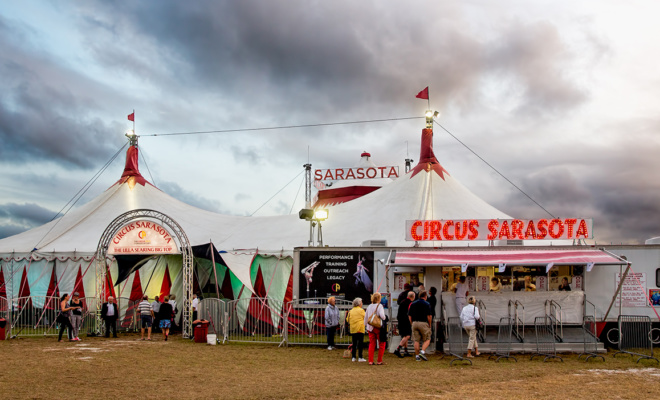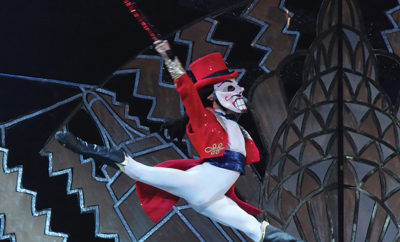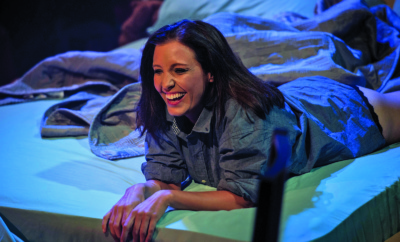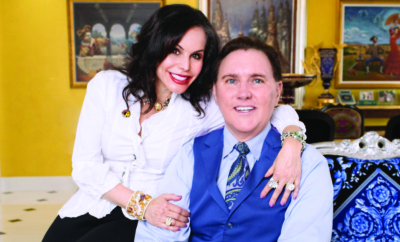
Feature
The Circus Arts Conservatory at the 50th Anniversary Smithsonian Folklife Festival
By Ryan G. Van Cleave
I lived in Washington, D.C. when I was working as the Jenny McKean Moore Writer-in-Washington at George Washington University, and while there, I used to visit the nearly endless attractions like the museums, theaters, historical sites, and events. Who doesn’t love the National Cherry Blossom Festival, or seeing a Bosch (or Degas, Picasso, Rembrandt, or Seurat!) up close at the National Gallery of Art, or witnessing “Remember the Children: Daniel’s Story” at the U.S. Holocaust Memorial Museum? Smithsonian
Yet, one of my fondest memories of my short time there (alas, it was a one-year opportunity) was attending the Smithsonian Folklife Festival. This summer is the 50th anniversary of the two-week “international exposition of living cultural heritage” that takes place on the National Mall, and imagine my surprise and joy to learn that our very own Circus Arts Conservatory of Sarasota is one of the major partners for this year’s Circus Arts theme.
A solid background
The Circus Arts Conservatory was founded under a different name in 1997, but the spirit of the organization has stayed the same — preserve and promote the circus arts. Its stated mission today is “to engage and educate students using unique and innovative learning programs; to measurably improve the quality of life for individuals in care facilities; and to advance the extraordinary legacy and heritage of the circus.” It’s no wonder that they’re a major player in the Smithsonian Folklife Festival! The Circus Arts Conservatory (CAC) appeared on the Smithsonian’s radar in a big way when co-founder Dolly Jacobs — daughter of famed circus clown Lou Jacobs and former New York fashion model-turned-circus-performer Jean Rockwell Jacobs — won both a Florida Folk Heritage Award in 2012 and then a 2015 Folklife Fellowship from the National Endowment for the Arts.
Jennifer Mitchell, Managing Director of The Circus Arts Conservatory, says, “That pair of awards for Jacobs spurred a lot of opportunities. It was the first NEA ever given to a circus artist!” She notes that the NEA is affiliated with the Smithsonian largely through the cross-programming they do, and that’s largely how this partnership came to be. They’ve been in the planning stages since November 2015. “A lot of circus entities are coming together for this, but no one is working as closely with the Smithsonian as we are,” she adds. They’ll be bringing their own big top — the main venue for the entire festival — to the National Mall. That’s the very same big top you see January through March at Nathan Benderson Park behind the Mall at UTC. They’ll also be bringing along nearly 80 attendees, which include students from the Sailor Circus and other circus artists from southwest Florida.
“The festival will have five million spectators.”
The festival takes place from June 29 to July 4, then it’s dark on July 5 before closing with a final four days from July 6 through 9. It’s a world-class opportunity to bring the circus arts to a national stage, reports Mitchell. “The festival averages 100,000 visitors per day, so that’s a million on-site visitors. They’ll also live stream it and have other media coverage. In total, the expectation is that the festival will have five million spectators.”
Networking on a national stage
Why is all of this important? Because it’ll allow a national and international audience as well as legislators to see firsthand what the circus arts are about. “We’re one of the oldest forms of entertainment,” Mitchell adds. “Circus goes back to the time of the pharaohs and the pyramids.” But having the circus arts showcased in this festival also powerfully reveals how organizations like the CAC are continuing to keep the circus relevant as well as serving to preserve its storied past. Plus it’s a great way for the various groups and organizations to network and discover ways to work together.
Well-rounded experiences
One of the main things that The Circus Arts Conservatory will show at the festival is the successes of their local and regional programming. For example, there’s the Education program, which has evolved into a partnership with the University of South Florida, for which teaching artists go into Sarasota and Manatee County schools to teach key academic lessons in science, language arts, and theater — all developed specifically with the New Florida Standards in mind. Circus acts like the trapeze and tightrope walking are a great meld of athletics and performing arts, and it’s fundamentally about science, too. How do you rig a wire? How high does a performer go in the air? How does one’s weight play into the motion? Where does balance come into play? The Circus Science Machine will be presented at the festival for attendees to see first-hand how a circus themed Rube Goldberg contraption can teach students physics, engineering and science.
Where else can you impact so many generations at once?
One of the things Mitchell loves most about the circus is that it’s still relevant in everyday life. Where else can you impact so many generations at once? It’s one of the few things with which her 92-year-old father and 7-year-old son both connect equally.
If you’re concerned that the closing of the Ringling Brothers circus is the death toll for circuses, don’t be. Yes, the circus industry is changing, she admits, but adapting and growing is a healthy option. “If Ford motor company stopped making cars tomorrow,” explains Mitchell, “there’d still be cars on the road.” And similarly, there will continue to be circuses, too. Yet people want a different type of circus — they don’t want to sit and watch but rather they want to engage. That’s what the future of the circus looks like. They’ll be interactive, exciting, and entertaining.
Check out the Smithsonian Folklife Festival this summer and you’ll see just what she means.






You must be logged in to post a comment Login